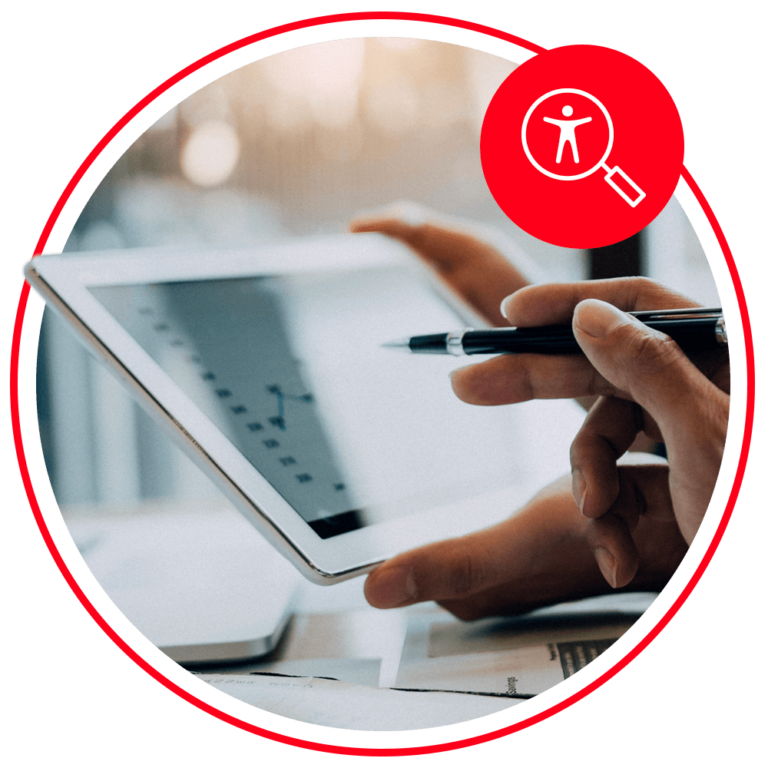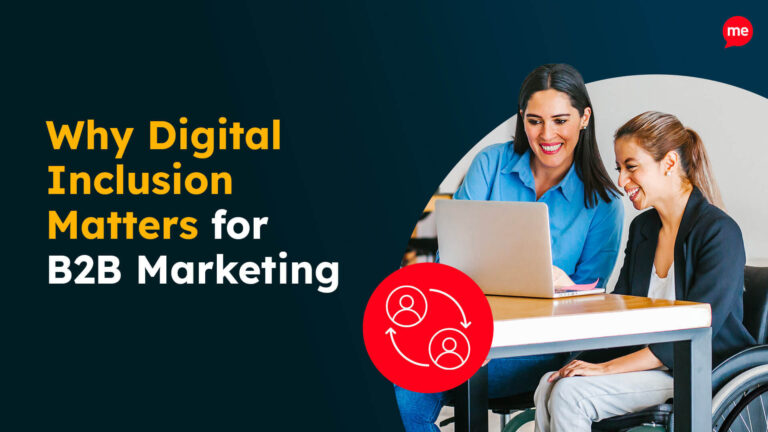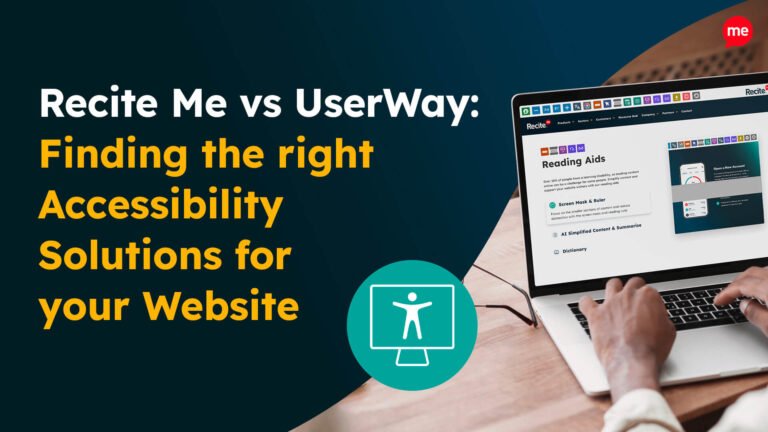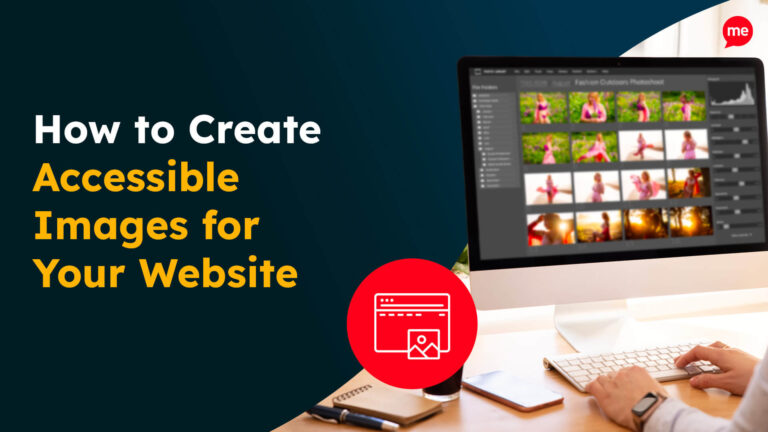Get Your Free Accessibility & Inclusion Toolkit
Download NowDigital accessibility or “A11y” (a numeronym for the 11 letters between “A” and “Y” in “accessibility”) is no longer optional. Beyond regulations, it’s about creating an inclusive web for everyone. An accessibility audit (or A11y audit) helps you understand how inclusive your site really is. It reveals the barriers that are preventing people with disabilities from accessing your content, tools, and services effectively.
This guide will walk you through what an A11y audit is, the types of audits you can run, the common issues you’ll likely encounter, and the step-by-step process for making your site more accessible.
Understanding the standards and guidelines for A11y audits
Before you start an A11y audit, it’s important to know what becoming accessible actually requires. A11y isn’t about guesswork, it means aligning your website with established international standards.
Web Content Accessibility Guidelines (WCAG)
The most widely recognised framework is the Web Content Accessibility Guidelines (WCAG), developed by the W3C (World Wide Web Consortium). WCAG is organised around four principles known as POUR: websites must be Perceivable, Operable, Understandable, and Robust.
Each principle is broken down into success criteria at three levels:
- Level A: the minimum requirements for accessibility.
- Level AA: the industry standard (and often the legal requirement).
- Level AAA: the highest standard, rarely required but recommended where possible.
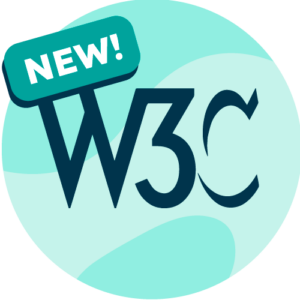
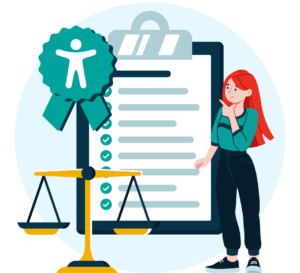
Regional accessibility laws
WCAG provides a set of guidelines, but it is not legally binding on its own. For this reason, many regions worldwide have enacted their own legislation, often drawing on WCAG as a reference. Examples of such laws include:
An A11y audit is essentially the process of checking your website against these laws and web guidelines to see where it succeeds and where it falls short.
Get a free automated accessibility check of your websites homepage. This will identify and highlight any compliance issues on your website. Followed by recommendations on how to implement the necessary changes to make your website more accessible.
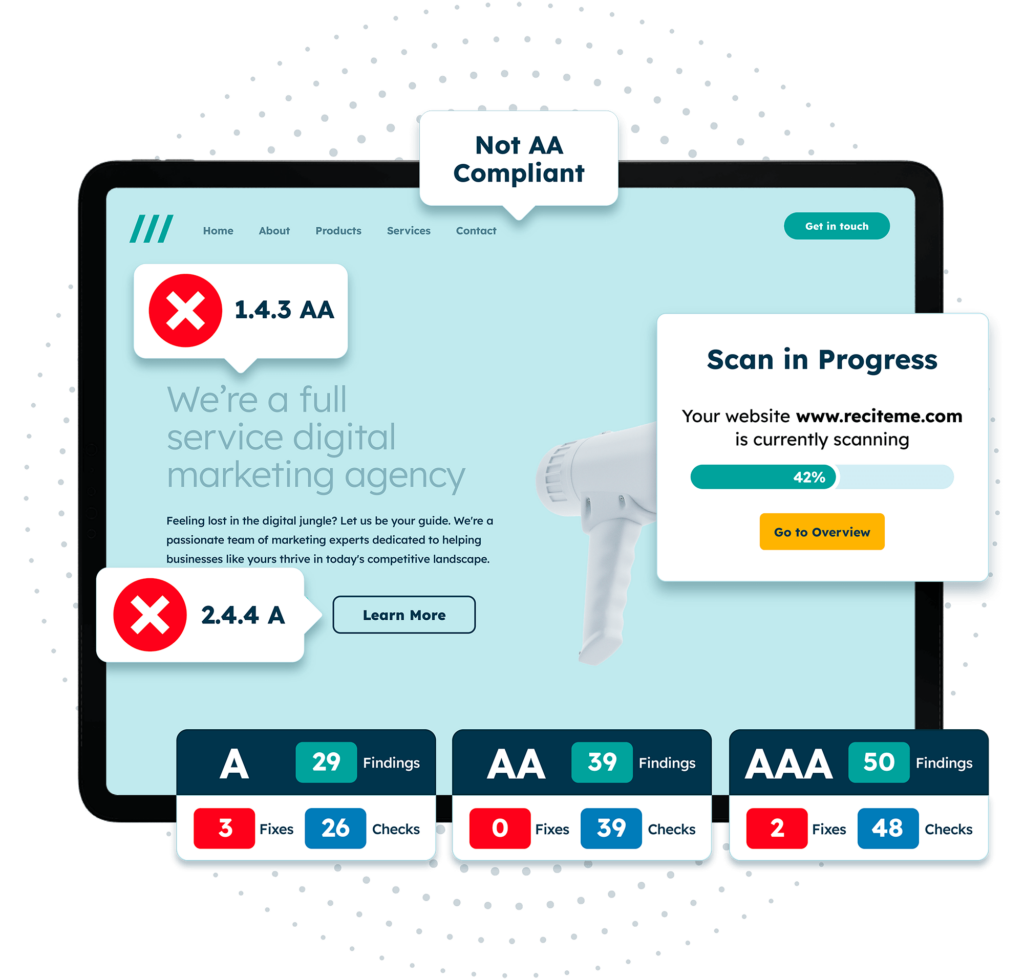
What are the types of A11y audits?
Not every a11y audit looks the same. The right approach depends on your goals, resources, and timelines. In many cases, the best strategy is a combination of methods. This gives you both the efficiency of automation and the depth of real-world testing.
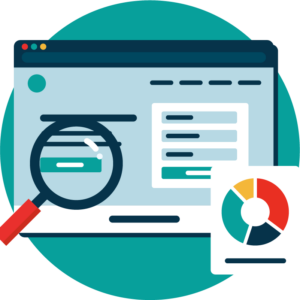
Automated audits
Automated tools scan your website for common accessibility issues like missing alt text, low contrast, or unlabelled buttons. These audits are fast, scalable, and beginner-friendly, making them a great first step. They also provide quick insights that can be shared with your team, helping you build awareness of accessibility best practices and track progress over time.
Manual audits
A manual audit involves your team testing your website against WCAG guidelines. This may include using assistive technology like screen readers to simulate how users with disabilities experience your site. Manual audits require more time and expertise than automated tools, but they are particularly valuable for checking your site’s structure, content clarity, and interactive elements.
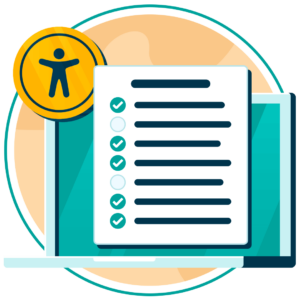
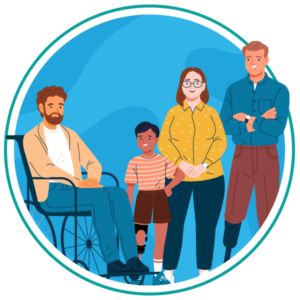
User testing with people with disabilities
The most insightful A11y audits involve real users with disabilities navigating your website. This type of testing provides authentic feedback on usability, not just compliance. For example, a disabled user may identify confusing navigation that technically meets WCAG requirements but is still difficult to use. While more resource-intensive, this approach ensures your website is truly accessible to the people it’s meant to serve.
What are the most common types of a11y accessibility issues found in an audit?
Almost every A11y audit reveals a familiar set of accessibility issues that affect how people interact with a website. Here are some of the most common:
Missing or incorrect alt text for images
Poor colour contrast between text and background
Keyboard inaccessibility (can’t navigate without a mouse)
Improper heading structure (skipped levels, no <h1>, inconsistent order)
Non-descriptive link text (“Click here” instead of meaningful labels)
Form issues: missing labels, unclear instructions, inaccessible error messages
Multimedia without captions or transcripts (videos, audio)
Dynamic content not announced to assistive tech (pop-ups, modals, live regions)
Inaccessible buttons (improper roles, missing aria-labels, or styled <div>s instead of <button>s)
Focus management problems (focus not visible, or lost when navigating)
Over-reliance on colour alone to convey meaning (errors in red)
Text resizing issues (content breaks when zoomed in)
Missing or incorrect ARIA attributes (or overuse causing confusion)
PDFs and documents that are not tagged for accessibility
Time limits without options to extend or disable
A step-by-step guide to A11y auditing
Running a website A11y audit may seem overwhelming, but breaking it into steps makes the process manageable. Each step builds on the previous one, ensuring that you catch as many issues as possible while creating a clear roadmap for fixes.
1. Run an automated scan of your website
Begin with an automated scan of your site, using a tool like a free website Accessibility Checker. Automated tools are quick to run and highlight common problems like missing image alt text, poor colour contrast, or unlabeled form fields. Automated checks are a great way to get a broad overview of your site’s accessibility health and provide a baseline for deeper testing.
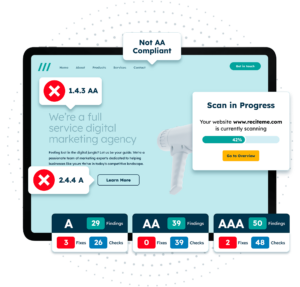
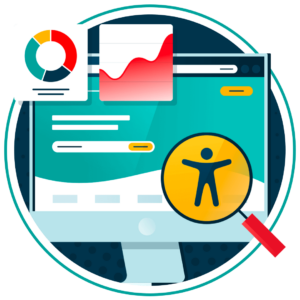
2. Conduct manual testing
Once you’ve completed an automated scan, follow up with manual testing to get a human perspective and uncover issues that tools cannot detect. This will involve processes like navigating your site with only a keyboard to ensure all interactive elements are accessible without a mouse, increasing zoom to 200% or more to ensure pages remain usable, and testing form fields for clarity and error handling.
3. Create a prioritised list of fixes
After collating your list of fixes, organise them into a clear action plan. Prioritise based on both impact and effort: address critical, high-impact issues first, then work your way down. Grouping fixes by category (content, design, code) also makes it easier for different team members to take ownership.
This step transforms your audit results from a long, overwhelming list into a manageable and actionable roadmap.
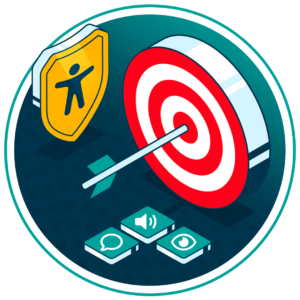

4. Implement A11y fixes in line with your audit
Finally, collaborate with developers, designers, and content creators to resolve the issues you’ve identified. Be sure that fixes are applied consistently across your website rather than on a page-by-page basis. After implementing changes, retest to confirm that the issues have been resolved and that no new barriers have been introduced. Documenting your fixes also helps future-proof your site, giving your team a reference for A11y practices.
The importance of a continuous auditing process
Think of accessibility as an ongoing process that is always evolving. Every time you update your website, add new content, or launch features, new accessibility barriers can appear. That’s why audits should be conducted regularly: ideally every 3–6 months, or whenever there are major website changes or updates to accessibility legislation. This proactive approach keeps your site aligned with both user needs and legal requirements.
Continuous auditing ensures:
- Your website remains compliant with evolving laws and standards.
- Accessibility improvements become part of your development workflow.
- Users with disabilities have a consistently positive experience.
Support your team with accessibility training
Accessibility isn’t just the responsibility of developers. Designers, content creators, marketers, and QA testers all play a role. Training your team ensures accessibility is baked into every step of the digital lifecycle and prevents accessibility problems from happening.
Recite Me offers free web accessibility training to guide you and your team through the essentials of online accessibility, WCAG standards, and how to take action.
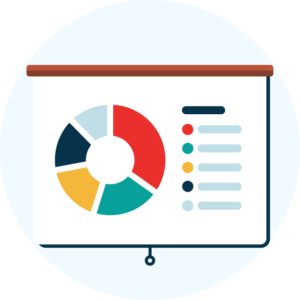
Why A11y best practices should be an important part of your website
Following a11y best practices can provide significant business benefits for your organisation. Here’s a quick look at how this would work:

Reach a broader audience (and boost revenue)
Accessible design unlocks your site for a major segment of users living with a disability: around 1.3 billion people worldwide, or approximately 16% of the global population according to WHO. There’s a powerful economic opportunity here: globally, the disability community wields around US $8 trillion in disposable annual income. Ignoring accessibility means potentially ignoring one-sixth of your market, and significant revenue potential with them.
Improve UX and SEO
Accessibility and SEO are intertwined. Practices like descriptive alt text, proper heading structure, and semantic HTML help assistive technology and also make content clearer to search engines. One study revealed that 73.4% of websites saw increased traffic after adopting accessibility improvements. It seems better accessibility also strengthens user experience, reduces bounce rates, and boosts rankings.
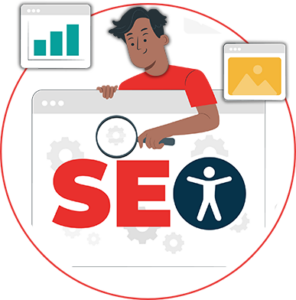
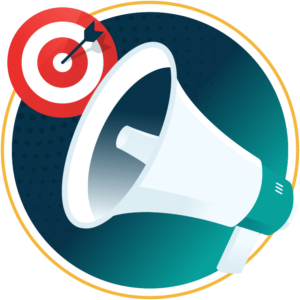
Strengthen brand image and customer trust
Inclusive design is not just ethical, it’s also good PR. Companies that prioritise accessibility send a strong message: we value all our customers. That builds trust, loyalty, and a better brand reputation. As organisations increasingly face scrutiny over equality and inclusivity, being proactive is a clear differentiator.
Lower legal risk and enhance credibility
Failing to address accessibility can be costly, especially if your website faces lawsuits for non-compliance. This can result in fines, legal fees, lost business, and significant time expenditure. Conducting regular a11y audits and implementing inclusive design not only reduces this risk but also reinforces your brand as responsible and trustworthy.
Our 40-page Digital Accessibility & Inclusion Toolkit helps businesses break down online barriers and make a real impact. It offers practical advice on all aspects of digital accessibility, from writing an accessibility statement to accessible website tips and inclusive hiring.
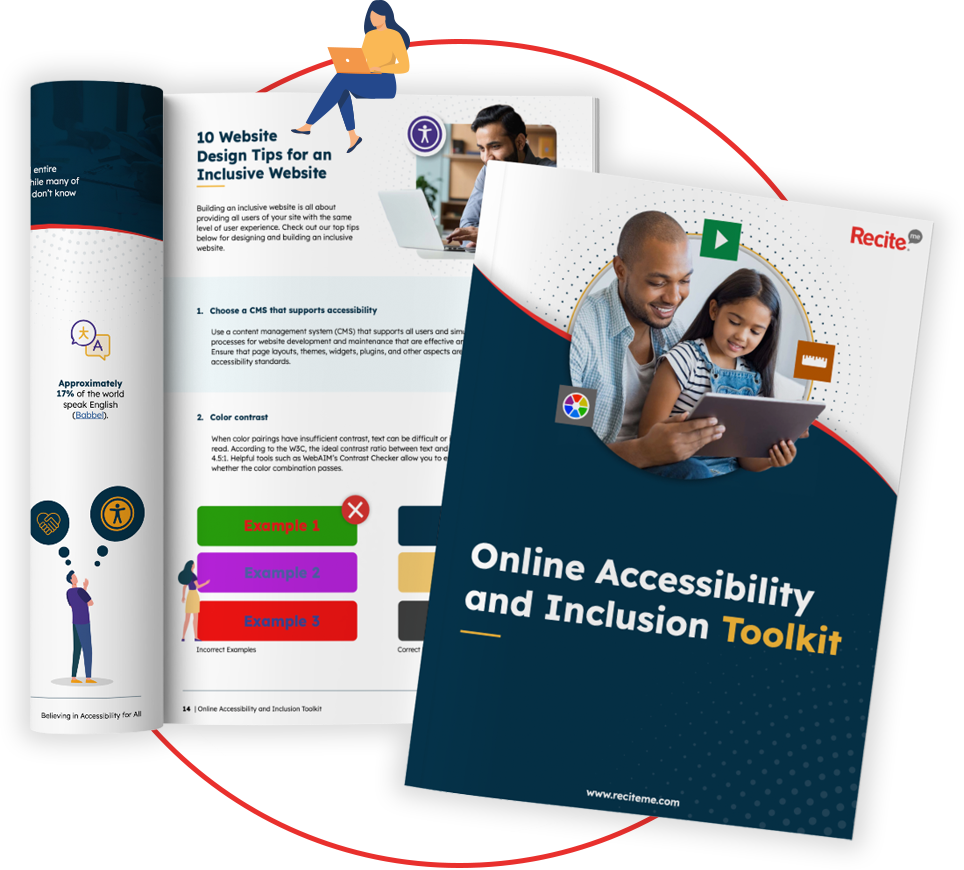
Conclusion: Audit your website for a11y compliance
Running an A11y audit is the most valuable step you can take towards website inclusivity and compliance. By understanding the global standards, recognising common issues, and following a structured auditing process, you can remove barriers that exclude users and strengthen your digital presence.
The big takeaway? An A11y audit isn’t something you do once and move on from. It’s a vital process in an ongoing journey toward a more accessible website.
A11y auditing FAQs
Looking for a recap or quick summary? Here are a few of our most frequently asked questions to help you get to grips with the essentials:
What is an A11y audit?
An A11y audit is a systematic review of your website’s accessibility, measured against standards like WCAG. It identifies barriers that prevent people with disabilities from accessing your content and provides actionable recommendations to improve inclusivity.
How do I prepare for an A11y audit?
Before starting an A11y audit, gather key user journeys (such as customer checkout or form submissions), identify priority pages, and ensure your team understands the scope. Having developers, designers, and content creators involved early can streamline fixes.
How much of my website should an A11y audit cover?
Ideally, an A11y audit should review your entire site. For large websites, auditors often start with templates and critical user journeys. By testing core layouts and components, you can uncover systemic issues that affect many pages.
How often should I run an A11y audit?
You should run an A11y audit every 3–6 months, after any major website changes, or when accessibility legislation is updated. This ensures your site stays compliant and continues to provide an inclusive experience.
What industries benefit most from an A11y audit?
Every industry can benefit, but e-commerce, education, government, healthcare, and financial services often see the greatest impact. These sectors rely heavily on online services, where accessibility directly affects customer trust, compliance, and revenue.
